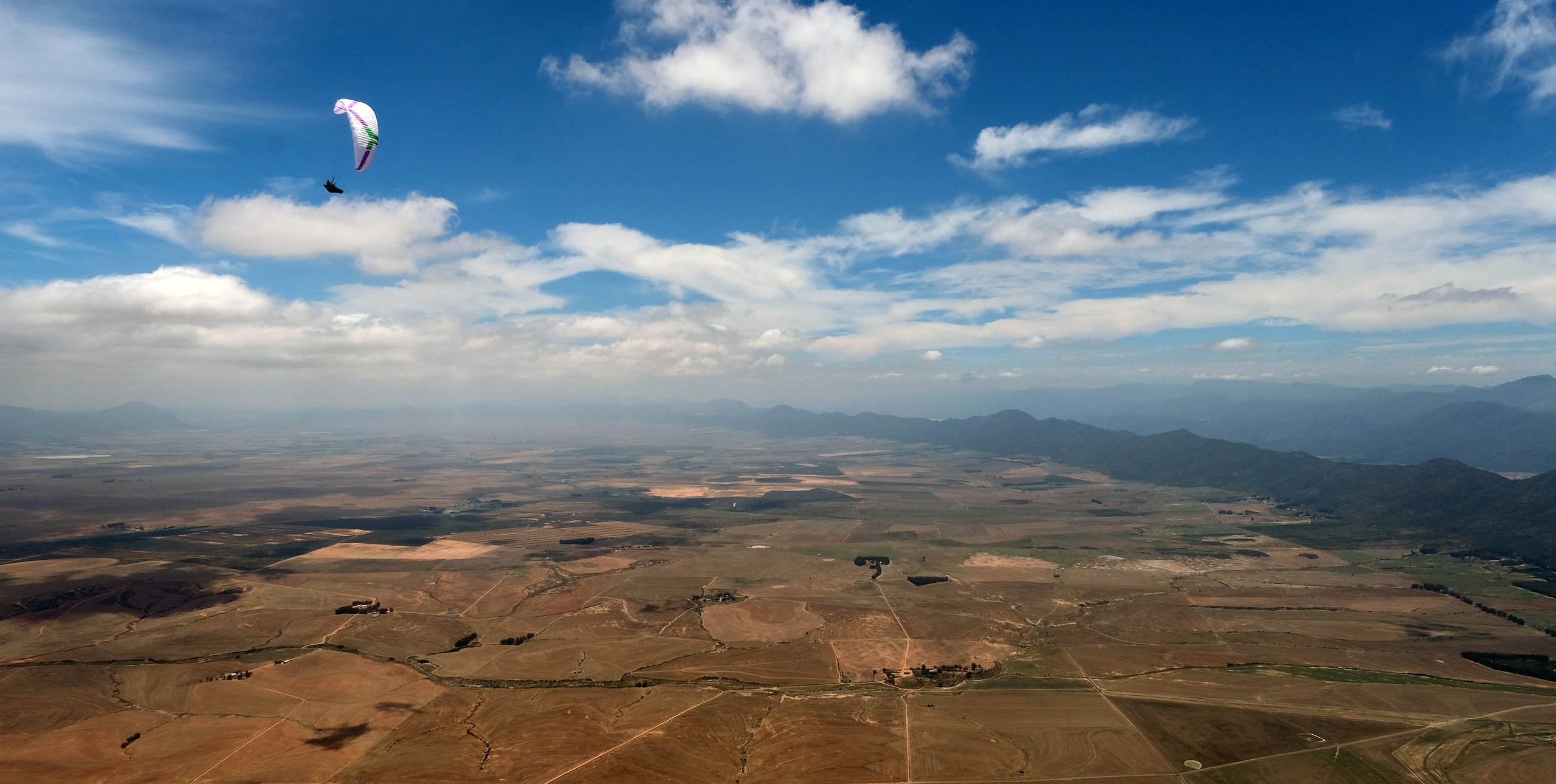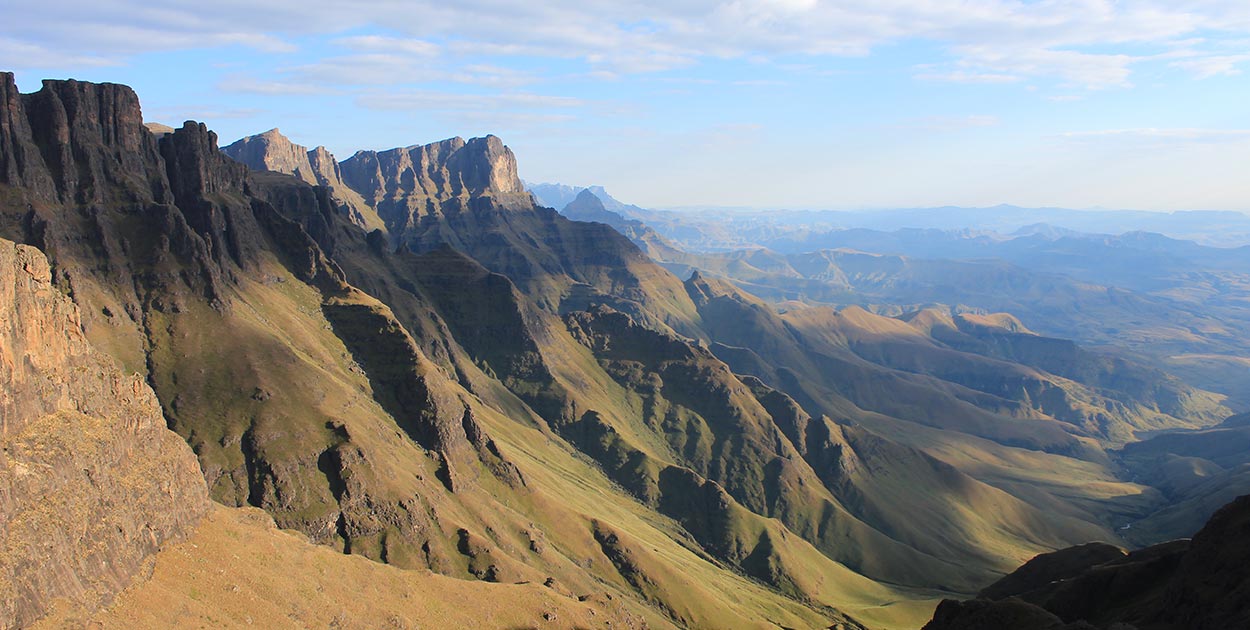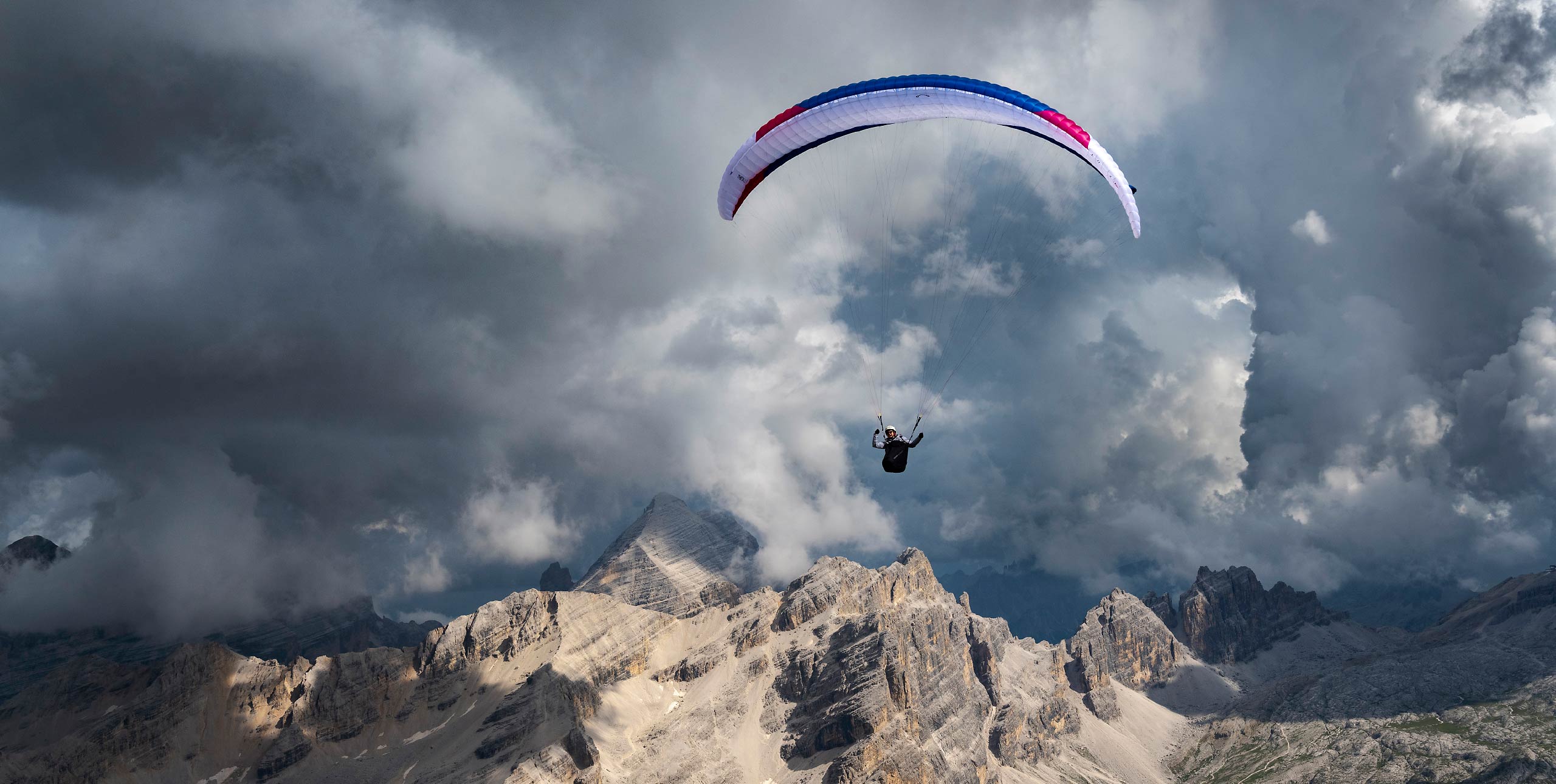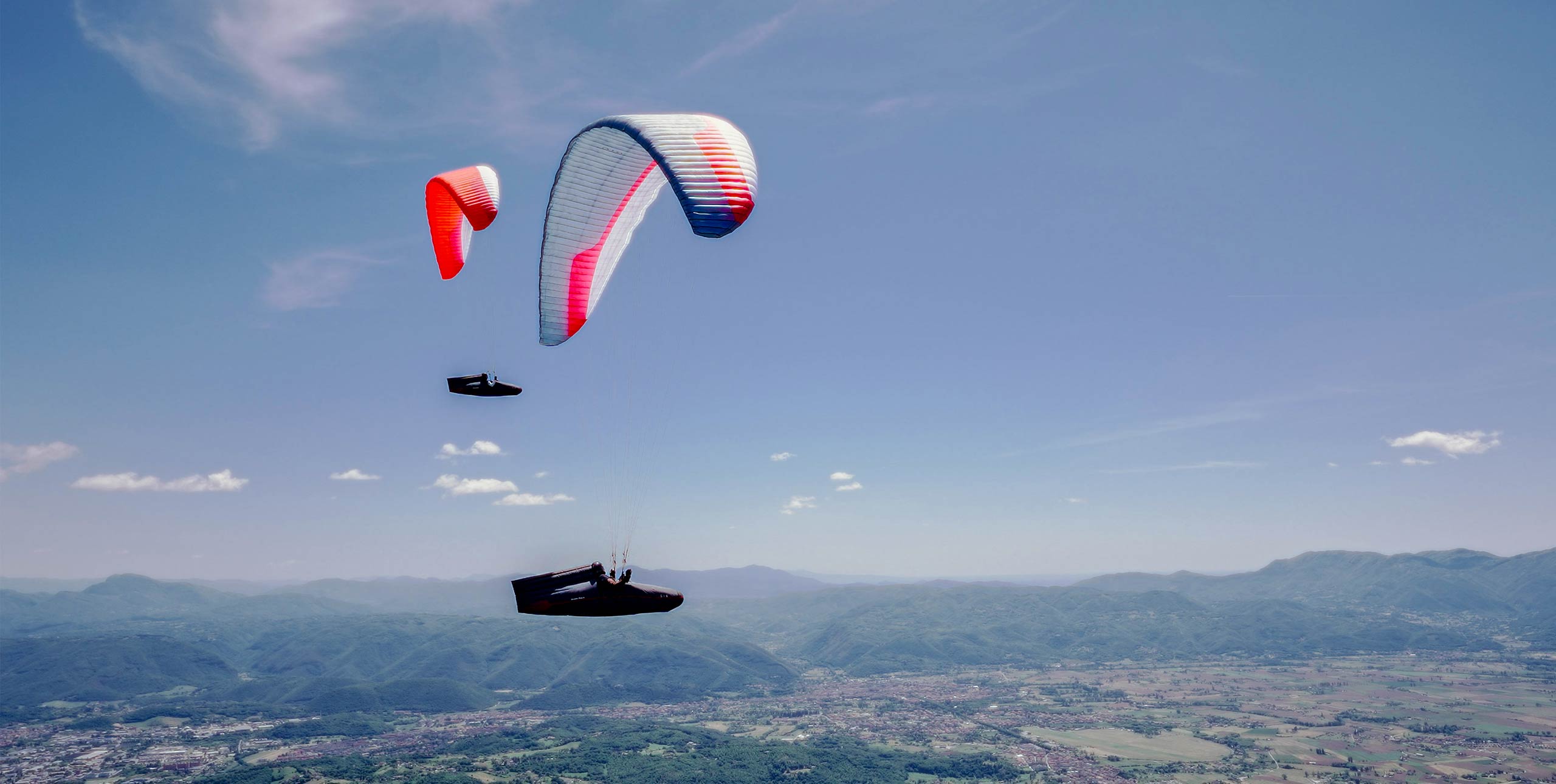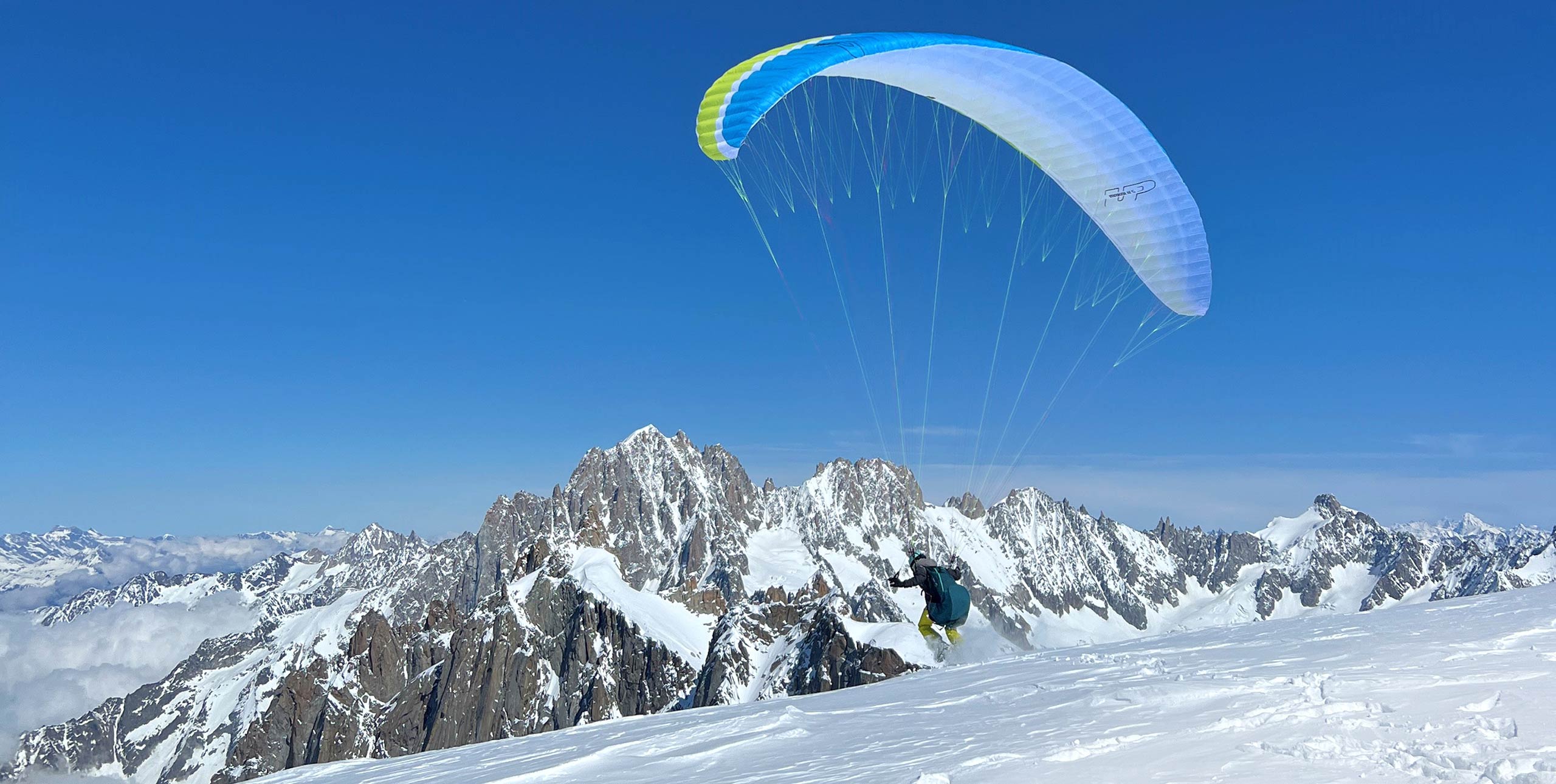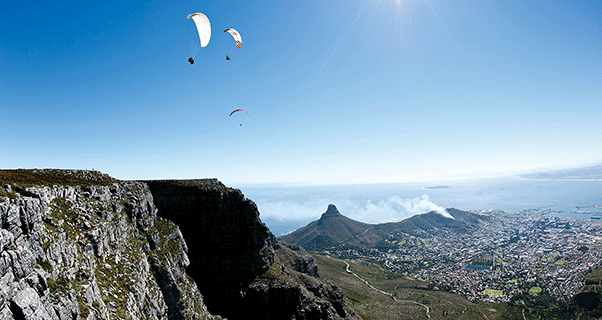
Guide to Cape Town, South Africa
9 February, 2014- Amazing city location at the bottom of Africa
- A perfect place to escape the northern winter
- Coastal flying with good XC flying 150km inland
- Go from November to March

WHY GO?
Scenic flying at the tip of Africa with XC heaven 150km inland.
WHERE IS IT?
WHAT’S IT LIKE?
There are several launches in and around Cape Town, all coastal. Lion’s Head is the most popular despite the tricky take off, but Sir Lowry’s Pass, Hermanus and, for more experienced pilots, Signal Hill are all worth checking out.
Flying off the iconic Table Mountain can be done, but the launch, called Table Mountain Runway, is a technical and high wind launch. It’s a good idea to go with someone who knows the local aerology but because the site requires a ‘Wild Card’ pass from the South African National Parks locals don’t fly it often.
The western launches give great views over the city of Cape Town and the others look out over the Atlantic Ocean and Robben Island, where Nelson Mandela was imprisoned. Between October and early November you can see southern right whales migrating along the coast.
You can drive right up to most of the launches but Lion’s Head is a 20-minute uphill trek. There are no shuttles but a taxi can get you from the landing zone back to your car at most sites.
The local pilots have a club at the base of Lion’s Head at the Glen Country Club on Clifton Beach, and you can team up with locals there.
There’s netting down on most launch areas but at some sites launching is on low veldt bush shrubs.
[youtube id=”E86XS3Vc3Mg” w=”602″]
FLYING CONDITIONS
This isn’t big XC territory. The sites here are unashamedly scenic flying, combining soaring and thermals. On an exceptional day you might just cobble together 25km hopping along the coastal mountain ranges. Springtime in November can produce some strong thermals, but generally the flying is mellow and easy.
However, the intricate relief and maritime winds create micro-meteorology that can be hard to read with some dangerous venturi areas in certain wind conditions. Check in with a local guide or at the very least get a briefing from a local pilot.
For an XC fix head to Porterville, 150km north east of Cape Town, where you’ll find active flying. Temperatures get up to 35-38C. Dry and brown cut wheat fields generate very good thermals averaging 4-5m/s, and reaching 9-12m/s. Low saves are common and climbs top out at around 1,500-2,500m, but can reach 3,200m.
The take-off is on a 70km-long ridge with flatlands in front that work well and have a network of roads to follow making retrieve easy. 50-80km flights are not unusual with the local experts going 150/180km.
WHEN TO GO
From November to end of March
ALTITUDE
Cape Town launches: 220m to 600m
Landing: Sea level
Average cloudbase: 1,800-2,500m but the Cape Town International Airport airspace ceiling is at 1,200m.
HANG GLIDER ACCESSS
Hermanus and Signal hill are drive up sites and are flown by hang gliders.
MUST BE FLOWN
There is spectacular coastal flying from Lion’s Head. Occasionally you can fly across to Table Mountain, top up and cross all the way past the Twelve Apostles, a series of stunning pinnacles that make up the west side of the mountain.
DANGERS AND ANNOYANCES
All levels of pilots can fly these sites, except Signal Hill, which is for advanced pilots only.
The Capetonian weather can change fast, so keep a lookout for squall lines on the ocean. The NW sea breeze picks up quickly and all sites have their potential venturi areas.
Don’t be tempted to take the thermal off Lion’s Head in the NE Berg-wind – you’ll regret it on the way back down through violently mixing air layers.
ACCOMMODATION
Cape Town has everything from hostels to five-star hotels. The take-offs are in nicer areas so if you want to sleep close by you’ll have to shell out. Renting a small car and staying further away might save you money.
GUIDES AND COURSES
Birdmen Paragliding can arrange transport, accommodation and the compulsory temporary South African licence for visiting pilots as well as offering flying tours.
TAKE THE FAMILY AND RAINY DAYS
Drive to the end of Africa and snap a picture at the Cape of Good Hope. For tourist bars and restaurants head to the Waterfront. Take a tasting tour along the Stellenbosh wine route, muse through the city’s Botanical gardens or hop a boat ride to the infamous Robben Island.
WEATHER INFO
Windfinder.com, weathersa.co.za, and windguru.cz are all trusted sources, but the microclimates mean that you should still consult a local pilot before flying.
GETTING THERE
Fly into Cape Town International airport, rent a car or heave your glider onto the local bus service.
CONTACTS
www.birdmen.co.za
www.wallendair.com
• Got news? Send it to us at news@xccontent.local
Buy and sell gear on Skyads.aero


